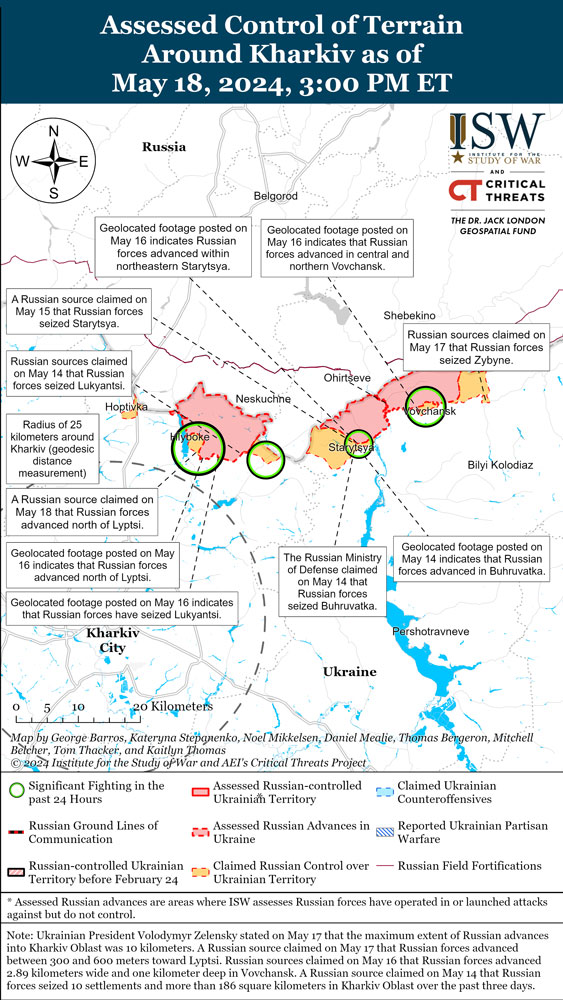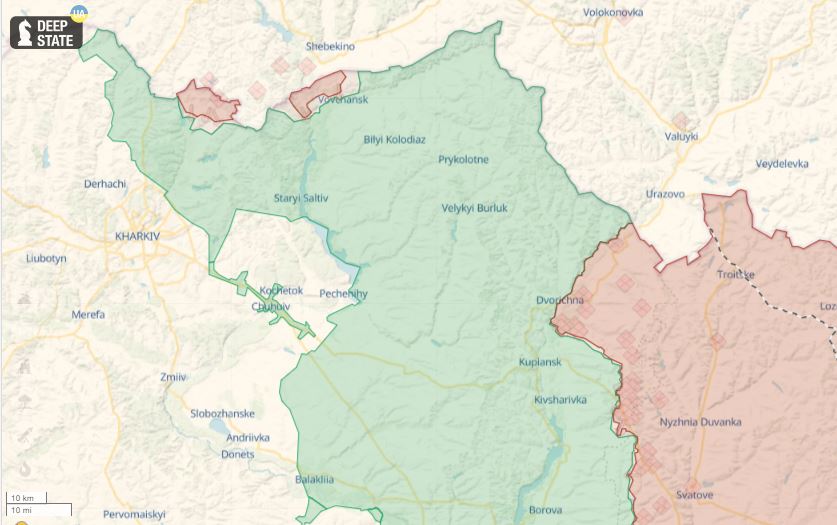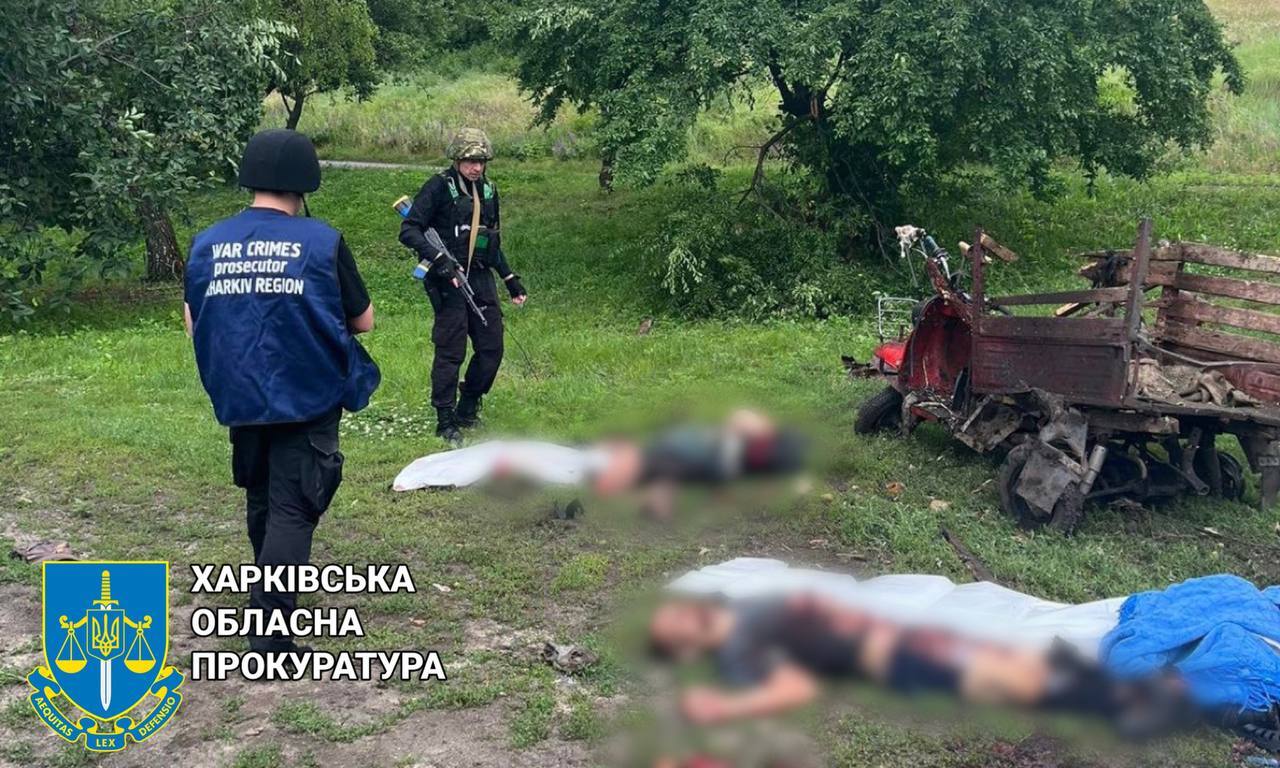The US-based think tank Institute for the Study of War (ISW) says that the Russian forces are "likely preparing for the second phase of their offensive operation in northern Kharkiv Oblast," which the Russians "likely intend to launch following their anticipated seizure of Vovchansk."
On 18 May, Ukrainian President Volodymyr Zelenskyy reported that Russian forces advanced 5-10 kilometers in northern Kharkiv Oblast before being stopped by Ukrainian forces, who are now facing the first of several Russian offensive waves in the area.
"A second wave of tactical attacks is not the same as the second phase of the operation, and Russian forces may need to launch several "waves" of tactical attacks to achieve the objective of any given singular phase of their offensive operation in northern Kharkiv Oblast," ISW noted.
Zelenskyy stated that while the Russian military aims to attack Kharkiv City, they lack the necessary manpower to capture it and will instead gradually advance toward the city to pressure Ukrainian forces into withdrawing.
ISW says that available evidence suggests that Russian forces have only deployed a limited portion of the forces staged in Belgorod, Kursk, and Bryansk oblasts for offensive operations in the area.
Ukrainian sources reported that as of May 11, Russian forces had deployed 2,000 personnel to the frontline along the border, with an additional 1,500 to 2,000 in immediate reserve. However, they also noted that the forces committed to offensive operations in northern Kharkiv Oblast may already be degraded due to heavy losses.
Ukrainian sources recently stated that Russian forces are "leasing" limited elements from formations in the Svatove area, part of the Western Grouping of Forces. However, other Russian groupings reportedly lack "free" combat-ready forces or regiment- or brigade-level assets to reinforce the Northern Grouping of Forces and sustain or intensify offensive operations along the border.
"The Russian military command is likely not committing available reserves from the Northern Grouping of Forces to current offensive operations because it intends for these elements to support later phases of the offensive operations or subsequent waves of assaults," the ISW wrote.
Russian forces reportedly initiated offensive operations along the international border before the Northern Grouping of Forces reached its planned full strength. They are likely to continue these operations in waves as the Russian military seeks to reinforce this grouping.

Major General Vadym Skibitskyi, Deputy Chief of the Ukrainian Main Military Intelligence Directorate (HUR), recently reported that Russian forces have approximately 35,000 personnel deployed in the border areas of Kursk, Bryansk, and Belgorod oblasts. He stated that Russian forces aim to establish a grouping of 50,000 to 75,000 personnel in the area.
Ukrainian sources recently reported that an additional 3,750 Russian personnel may soon arrive in northern Kharkiv Oblast. Russian forces have conducted offensive operations in "pulses," with one sector's intensity decreasing as another's increases. They may temporarily slow operations in northern Kharkiv to replenish losses and strengthen the Northern Grouping of Forces before resuming a second wave of attacks.
Russian forces are currently prioritizing the seizure of Vovchansk, likely one of the remaining tactical objectives of their first phase of offensive operations in northern Kharkiv Oblast. They have conducted strikes on bridges across the Siverskyi Donets River to isolate the battlefield east of the river, aiming to degrade Ukrainian ground lines of communication and seize Vovchansk more quickly. Russian forces are reportedly conducting more glide bomb strikes on Vovchansk than elsewhere along the border and have committed more manpower to this area compared to the Lyptsi direction.
The ISW notes that the Russian military command likely selected the seizure of Vovchansk as a key tactical objective in the first phase of their offensive in northern Kharkiv Oblast because it is the largest settlement on the border. Capturing Vovchansk would provide a staging ground near the Russian rear for preparing and launching the second phase of their offensive operations.
"It is unclear if the second phase of the Russian offensive operation in northern Kharkiv Oblast will prioritize Russia's operational objective to expand the desired "buffer zone" further in width along the international border or Russia's operational objective to advance to within effective tube artillery range of Kharkiv City and its environs," the ISW says.
The ISW concludes that Russian forces could also envision a subsequent phase of their offensive operation from Vovchansk aimed at advancing towards Velykyi Burluk, which would threaten the operational rear of the Ukrainian forces defending the Kupiansk direction.
Read also:
- ISW: Kharkiv offensive slows, but Russia fixes Ukrainian forces along border
- Delayed Western aid allowed Russia to attack Kharkiv Oblast
- General Staff: Ukrainian forces foil Russian entrenchment in Vovchansk
- Zelenskyy: Kharkiv Oblast situation generally controlled, units being reinforced





